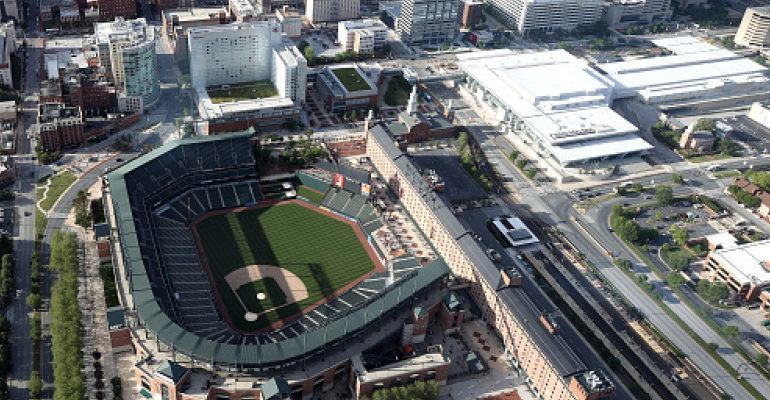For conventions and trade shows, the good news in Baltimore is twofold: First, the convention center is almost as busy this year as it was in 2019, with more than 100 large events booked. Second, a $26 million improvement plan is ready to begin on July 1 that will bring refreshed escalators and elevators, HVAC upgrades throughout, and back-of-the-house improvements to make servicing events more efficient.
Set next to Camden Yards, home to pro baseball’s Baltimore Orioles, the convention center has a 36,600-square-foot ballroom plus 50 breakout rooms, along with 300,000 square feet of contiguous exhibit space. It’s located within one mile of 9,000 hotel rooms and is three blocks west of the Inner Harbor waterway, home to the National Aquarium and several historic ships. The convention center has a light-rail station on site, linking it directly to BWI-Thurgood Marshall Airport 18 miles away.
Another city preparing to upgrade for the benefit of conventions and trade shows is Austin, Texas. However, the changes coming to the Austin Convention Center are quite expansive, literally: A $1.6 billion ground-up construction project will create an all-new center, nearly doubling the amount of rentable space. At the conclusion of the South by Southwest festival in March 2025, the current center will be demolished, with a multi-story facility rising in its place that’s expected to be ready for business by 2029 with more than 700,000 square feet of rentable space.
The construction will alter the way South by Southwest, the largest annual event in Austin, operates. Michele Flores, South by Southwest’s chief logistics officer, stated in a press release that “we’re excited about the prospect of reimagining SXSW for a few years, then we'll look forward to returning to the new convention center in 2029 for an improved SXSW experience.”
“An expanded convention center has been a topic of conversation for years and, as we continue to become a focal point in the world, we have to accommodate a larger number of events,” added Austin Mayor Kirk Watson. “With a bigger convention center, the economic impact to our city is estimated to jump to over $750 million annually versus the current $468 million. A larger facility also means more travelers to Austin and jobs in the Austin hospitality industry.”
The expansion will be funded by the convention center’s revenues and its allocation from the city’s hotel occupancy tax.





